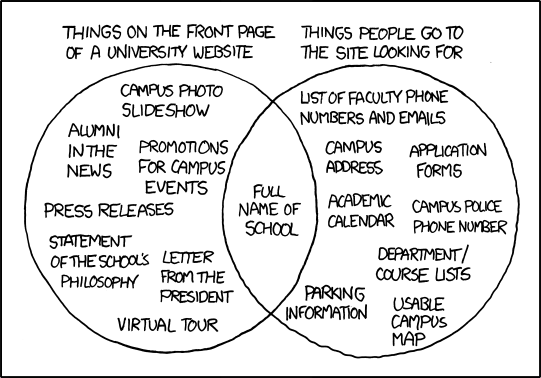 Posted by Andy Blanchard on May 19, 2014
Posted by Andy Blanchard on May 19, 2014
Whether seeking to increase enrollment of prospective students, improve efficiency for current students, and/or communicate effectively and generate development funds from alumni, Higher Education organizations must have a strong, well-organized website and online presence to meet the growing demands of the next generation of students, parents, alumni and faculty.
Fortunately, we’ve had the opportunity to work with a few great higher ed organizations including University of Michigan, Central Michigan University, University of Michigan-Dearborn, Washtenaw Community College, and many more. We have learned firsthand how to build a strong web strategy that has helped organize and communicate their message and brand online.
What goes into a good web strategy? How do you easily inform students, parents, and community members all on one site? What features are need to manage and update the site? At a core level, a Higher Ed site has a need to address multiple audiences in one clear digital presence. Here are a few ways to consider and prepare your site for these multiple users.
Consistent Branding and Design
Often times, a university or larger organization will have multiple brands or departments to include under one website. Make sure that all departments and divisions are wrangled in or limited on the amount of design freedom they are given. You can have room for some differentiation, but strong visual consistency for a university or organization reminds users how it all ties together under your organization.
Strong Navigation and Calls to Action
What do you want from your audience online? What are they looking for when they arrive at your website? Your navigation should easily help students, faculty, parents, and alumni find what they are looking for. A clear call to action, such as a button, icon or photo, helps direct users through the site to their destination.
Understanding Your Audience At Every Step
Higher education is a business. Your organization needs to make sure it understands its audience during every step of the web process, including the most important parts that help your business grow. For example, how do you direct and inform Alumni and Donors? How can someone apply and pay for tuition easily? Messaging and design need to clearly speak to address these steps on the site.
Here’s a great look at what it means to think from your user’s perspective*. (http://educheckup.com/)
Looking for more information on Higher Ed digital strategies? We’re excited to help sponsor this week’s upcoming Higher Education Web Conference* (http://mi.highedweb.org/). We hope to see you there.